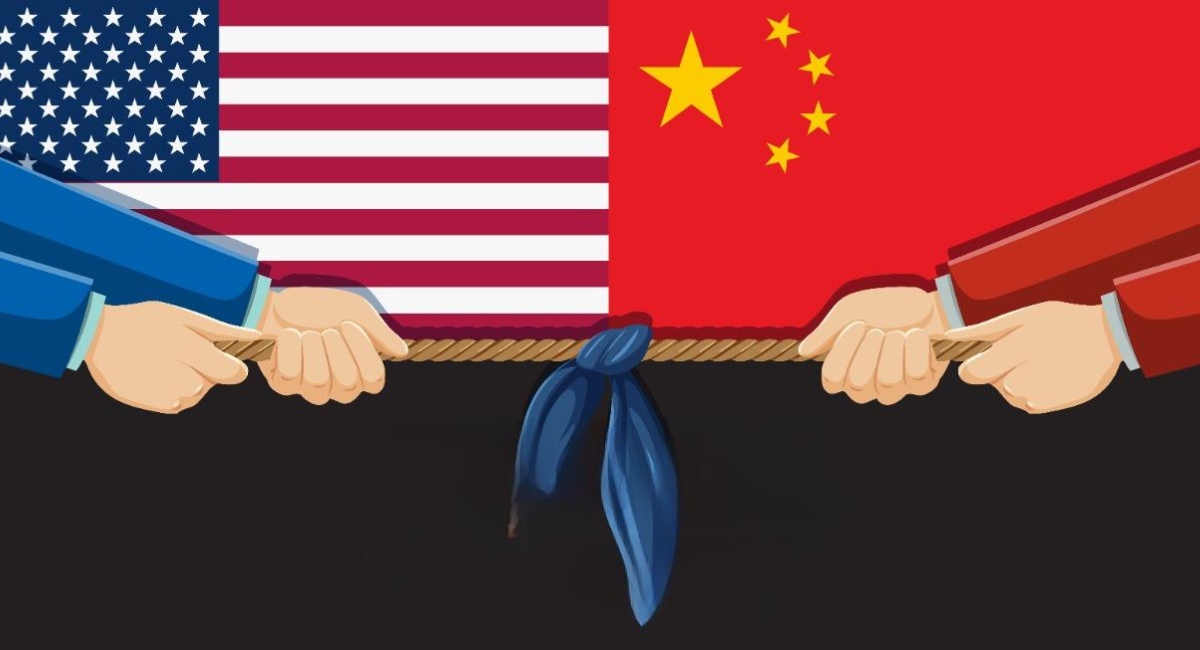The year 2025 marks a turning point in the ongoing trade dispute between the United States and China. Both powers have introduced significant changes to customs tariffs and the treatment of low-value goods, with wide-reaching consequences for global commerce. This article aims to unpack the key aspects of this complex situation – from the current tariffs and updates to the “de minimis” exemption, to trade volumes and a broader look at how this tightly interconnected economy is shifting.
Let’s begin with a look at the most recent developments. Enjoy the read!
US–China tariffs: latest updates on US duties on chinese imports
To begin with some context: the United States imposed a 10% tariff on Chinese imports on 4 February 2025, followed by a sharp increase to 20% on 4 March, citing concerns linked to the opioid crisis. Then, on 11 April, the administration introduced a “reciprocal” rate of 34%, which, by 12 April, effectively reached as high as 145% on certain categories of Chinese goods. In retaliation, China levied tariffs of up to 125% on US products.
To ease tensions, a deal was negotiated on 12 May 2025, reducing US tariffs on Chinese goods to 30% and Chinese tariffs on American goods to 10%, with the arrangement set to remain in effect until 12 August 2025.
More recently, on 29 July 2025, US and Chinese officials held talks in Stockholm, agreeing in principle to pursue an extension of the tariff truce beyond the mid-August deadline. However, the final decision now lies in the hands of President Trump.
How high are China’s tariffs on US goods?
Now let’s turn to China’s retaliatory tariffs against the United States. In response to Washington’s moves, Beijing imposed additional duties that escalated rapidly – rising from 34% in early April to as much as 125% by 12 April 2025. These were later scaled back to 10% under the terms of the May agreement, which remains in effect until 12 August 2025 as part of the tariff truce.
This sequence of events highlights just how fast-moving and mutually punitive these measures have been, with tangible repercussions across sensitive sectors such as agriculture, strategic raw materials, and technology.
What is the “De Minimis” exemption in the US and what’s changed?
One of the most impactful recent shifts in global trade dynamics has been the reduction—and eventual full suspension—of the US “de minimis” exemption. Previously, shipments valued at under $800 could enter the United States without duties or formal customs procedures, thanks to Section 321 of the 1930 Tariff Act. This provision fuelled the rise of platforms like Shein and Temu, which were able to ship low-cost goods directly to American consumers with no added charges.
However, from 2 May 2025, the US administration scrapped the exemption for parcels arriving from China and Hong Kong. Initially, these packages were hit with a 120% tariff or a flat fee of $100; this was later reduced to 54% from 14 May 2025.
Then, on 30 July 2025, a new executive order extended the suspension globally, effective from 29 August 2025. For a six-month period, all international mail parcels will face flat fees between $80 and $200, after which country-specific ad valorem duties will be introduced. The move has already triggered a 35% drop in mail traffic from China and a 4–5% dip in shares of FedEx and UPS.
How much do the United States and China trade with each other?
Now let’s take a look at some compelling figures that help paint a clearer picture of the situation.
In 2024, total trade in goods between the US and China exceeded $580 billion: around $438 billion in US imports from China and $143 billion in US exports to China, resulting in a significant trade deficit of $295 billion. This imbalance has remained largely unchanged through the early months of 2025, despite shifting tariffs.
This deficit highlights the US’s heavy reliance on foreign sectors such as electronics, textiles, and components. Meanwhile, China has continued to focus on exporting raw materials and advanced technology to the US. The tariff tensions have already led many Chinese companies to reroute exports through Southeast Asia, with shipments via Vietnam up 30% and via Indonesia up 25%, in an effort to sidestep direct duties.
Who depends more on whom, China or the US?
When it comes to mutual dependence, it’s clear that the United States imports far more from China ($438 billion) than it exports in return ($143 billion), leaving Washington more vulnerable to disruptions in Chinese supply chains.
On the other hand, China remains exposed to punitive US measures. Rising tariffs have limited Beijing’s access to the American market. In response, the Chinese government has introduced financial support schemes, tax incentives, free trade zones, and export-promotion initiatives to soften the blow on its exporters; nevertheless, these punitive measures still represent a significant problem for the Chinese economy.
In short, the relationship is distinctly asymmetrical: the US benefits from low-cost consumer goods but suffers from a persistent trade deficit. China, while enjoying a surplus, faces growing barriers that restrict its access to US buyers. This dynamic creates mutual pressure—but with differing consequences for each country’s trade strategy.
In conclusion, the measures introduced in 2025—from the tariff escalations to the global suspension of the de minimis regime—are reshaping international trade at a breakneck pace. The US–China trade gap highlights America’s deep reliance on Chinese imports, while Beijing seeks to offset the impact through alternative markets and domestic reforms.
By understanding these changes, globally active companies can plan more effectively. We encourage you to get in touch with CTI for tailored guidance on how to adapt your supply chain to this fast-evolving landscape and minimise both operational and tariff-related risks.










